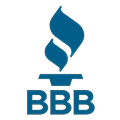
Mortgage Refinance and Renewal

What is a Refinance?
Refinancing a mortgage involves replacing your current mortgage with a new one, often with different terms or a lower interest rate.
You may refinance to switch from a variable to a fixed rate, consolidate debt, or fund home renovations before posting your home for sale. Some individuals opt to construct a laneway home or add a pool to their property. Basically refinancing your home involves replacing your current mortgage with a new one, often to secure better terms or access equity.
What is a Renewal?
You’re not obligated to automatically renew your mortgage with your bank. Starting to shop around for mortgage renewal options 120 days before your current mortgage term allows you ample opportunity to explore different lenders, compare rates and terms, and negotiate the best possible deal for your next mortgage term. Renewal does not require a new mortgage application or credit check.
As mortgage specialists, we’re here to help you explore all your options. We’ll take the time to assess your current mortgage terms and compare them with offerings from other lenders to find you a better rate and more favourable terms.
By shopping around and negotiating on your behalf, we can potentially save you money on interest charges.
Researching and comparing offers from multiple lenders takes time. Starting the process early allows you to carefully evaluate your options and find the most competitive rates and terms.
Having sufficient time before your renewal deadline gives you leverage to negotiate with your current lender or explore offers from other lenders. You can use competing offers as leverage to negotiate better terms or rates with your current lender.
Rushing to renew your mortgage at the last minute can lead to making hasty decisions that may not be in your best interest. Starting early allows you to make informed decisions and avoid feeling pressured to accept less favourable terms.
Starting the renewal process early ensures a smooth transition from your current mortgage term to the next. It gives you time to complete any necessary paperwork, address potential issues, and ensure everything is in place before your term expires. If you decide to make a change or transfer to another lender during your mortgage renewal process, there may be additional steps involved, such as obtaining an appraisal or submitting extra paperwork. You might also encounter pre-payment penalties that you weren’t previously aware of.
Breaking a fixed-rate mortgage to switch to a variable rate can be a smart move to save on interest charges. It is always important to speak to a mortgage advisor and calculate potential penalties and legal closing costs. At times, the penalties for breaking a mortgage can be significant, so it’s important to consider the total interest paid over the entire mortgage term.
Mortgage Refinance
- Refinancing involves replacing your existing mortgage with a new one, typically to take advantage of better terms or to access equity in your home
- You may refinance to secure a lower interest rate, switch from a variable to a fixed rate, consolidate debt, or fund home renovations
- Refinancing requires going through the mortgage application process again, including a credit check, income verification, and appraisal of your home
- You may incur closing costs, such as appraisal fees, legal fees, and mortgage discharge fees
Mortgage Renewal
- Mortgage renewal occurs when your current mortgage term expires, and you have the option to renew your mortgage with the existing lender or switch to a new lender
- Renewal typically involves signing a new mortgage contract with updated terms, such as a new interest rate and term length
- Unlike refinancing, renewal does not require a new mortgage application or credit check
- While you have the opportunity to negotiate new terms with your lender during renewal, it’s essential to compare offers from other lenders to ensure you’re getting the best deal
SECURED LINE OF CREDIT or HELOC
A HELOC, or Home Equity Line of Credit is like a financial Swiss Army knife for homeowners. It lets you tap into the equity you’ve built up in your home and use it as a flexible line of credit. Think of it a bit like a credit card with a much larger limit and typically lower interest rates because your home backs it.
Your home is the security for the HELOC, which generally means lower interest rates but also means you should be diligent with payments to avoid any risk to your home.
The amount you can borrow is usually up to 65% to 80% of your home’s value, minus any outstanding mortgage balance. Your credit limit is influenced by your home’s value, your creditworthiness, and your other financial commitments.
HELOCs typically have variable interest rates that follow the prime rate, but sometimes you can opt for a fixed rate. They’re usually much lower than credit card interest rates.
You only pay interest on what you use, not the entire available credit. Payments during the draw period often cover just the interest, but you can pay on the principal anytime to reduce it faster.
Whether you need to fix up the kitchen, cover tuition fees, or consolidate debt, a HELOC gives you the flexibility to use your funds for a variety of large expenses.
HELOCs usually have a draw period where you can borrow and reborrow as needed, typically lasting 5 to 10 years, followed by a repayment period where you pay back the principal.
Using a secured line of credit can be a smart way to leverage your home equity for financial flexibility. Still, it’s important to plan carefully to make sure it fits with your overall financial strategy.
